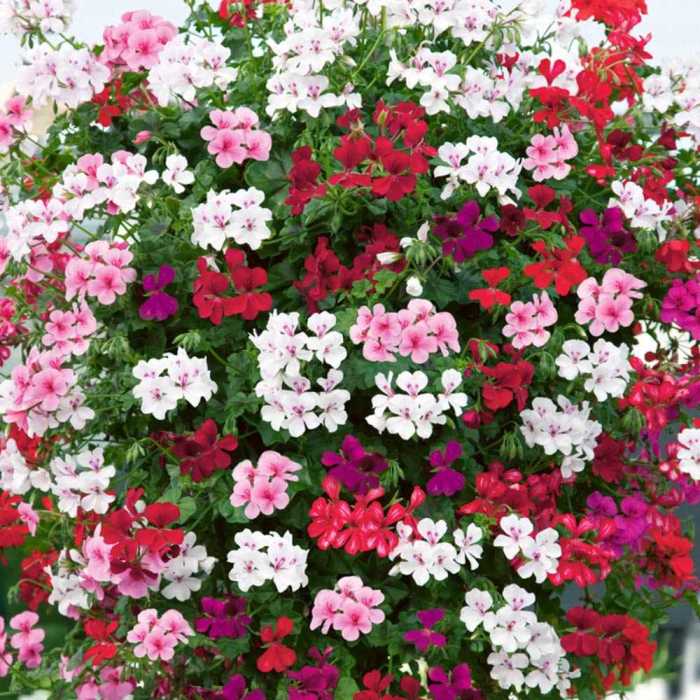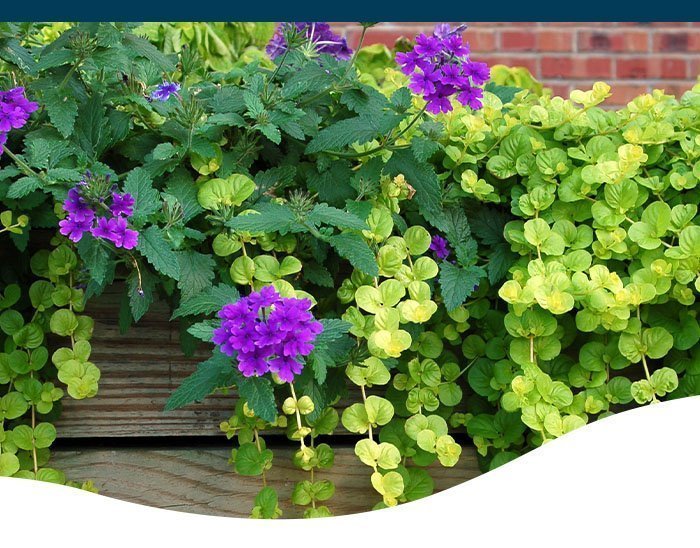Buy trailing plants and add a touch of elegance and charm to your living spaces. These versatile plants offer a unique way to bring nature indoors, creating a serene and inviting atmosphere. Their cascading foliage adds a dynamic touch to any room, making them perfect for hanging baskets, windowsills, and vertical gardens.
From lush ferns to vibrant succulents, the variety of trailing plants available is vast, ensuring you find the perfect match for your style and needs. Their aesthetic appeal is undeniable, but they also offer practical benefits such as air purification, space-saving, and erosion control.
Types of Trailing Plants

Trailing plants, known for their graceful, cascading growth habit, add a touch of elegance and visual interest to any indoor or outdoor space. These versatile plants come in a wide variety of species, each with its own unique characteristics, growth patterns, and foliage.From
the lush, heart-shaped leaves of Philodendron scandens to the delicate, variegated foliage of Tradescantia zebrina, trailing plants offer a diverse range of options for gardeners of all levels. Their adaptability and low-maintenance nature make them ideal for both indoor and outdoor settings, providing a touch of greenery and a sense of tranquility.
Popular Trailing Plants
- Philodendron scandens (Heartleaf Philodendron):This popular trailing plant is known for its heart-shaped, glossy leaves and cascading growth habit. It is a low-maintenance plant that thrives in bright, indirect light and well-draining soil.
- Tradescantia zebrina (Wandering Jew):This vibrant trailing plant features variegated leaves with stripes of green, silver, and purple. It is a fast-growing plant that prefers bright, indirect light and can tolerate a wide range of soil conditions.
- Pothos (Golden Pothos):This easy-care trailing plant is known for its variegated leaves in shades of green, yellow, and white. It is tolerant of low light conditions and can be grown in soil or water.
- Hoya carnosa (Wax Plant):This trailing succulent features thick, waxy leaves and produces clusters of fragrant flowers. It prefers bright, indirect light and well-draining soil.
- String of Pearls (Senecio rowleyanus):This unique trailing plant has delicate, pea-like leaves that resemble a string of pearls. It prefers bright, indirect light and well-draining soil.
Unique Characteristics
Trailing plants exhibit a range of unique characteristics that make them stand out from other types of plants. Their growth habits, leaf shapes, and colors contribute to their overall aesthetic appeal.
- Growth Habits:Trailing plants have a cascading or trailing growth habit, meaning they grow outwards and downwards, often forming long vines or stems. This growth habit makes them ideal for hanging baskets, windowsills, or trellises.
- Leaf Shapes:Trailing plants come in a wide variety of leaf shapes, including heart-shaped, oval, variegated, and even pea-like. The shape of the leaves can add visual interest and texture to any space.
- Colors:Trailing plants offer a range of colors, from deep greens to variegated patterns and vibrant purples. The colors of the leaves can add a splash of color and create a sense of tranquility in any indoor or outdoor space.
Benefits of Trailing Plants

Trailing plants, with their graceful tendrils and cascading foliage, offer an array of aesthetic and practical benefits. They bring a touch of elegance and charm to various settings, while also contributing to improved air quality, space optimization, and erosion control.
Aesthetic Appeal
Trailing plants add visual interest and texture to indoor and outdoor spaces. Their cascading growth habit makes them ideal for hanging baskets, windowsills, and vertical gardens. In hanging baskets, they create a dramatic waterfall effect, while on windowsills, they provide a lush border that frames the view.
In vertical gardens, they create a living tapestry that transforms walls into vibrant green canvases.
To add a touch of greenery and create a natural ambiance indoors, consider trailing plants. Their cascading vines can be elegantly displayed on decorative wall planters indoor https://hangingplantsindoor.com/decorative-wall-planters-indoor/ , creating a captivating visual element. Trailing plants bring a sense of tranquility to any space, making them a perfect choice for homes, offices, and other indoor environments.
Air Purification, Buy trailing plants
Trailing plants are natural air purifiers. Studies have shown that they can effectively remove harmful toxins from the air, including formaldehyde, benzene, and trichloroethylene. These toxins are commonly found in household cleaning products, building materials, and even electronic devices. By incorporating trailing plants into your home or office, you can improve the air quality and create a healthier indoor environment.
Space-Saving
Trailing plants are a great option for small spaces or areas where floor space is limited. Their vertical growth habit allows them to maximize vertical space without taking up valuable horizontal space. This makes them ideal for apartments, dorm rooms, and other compact living quarters.
They can also be used to create privacy screens or divide larger spaces into smaller, more intimate areas.
Trailing plants are a beautiful and versatile way to add greenery to your home. They can be used to create a living wall, hang from the ceiling, or even cascade down a bookshelf. If you’re looking for a way to add some life to your kitchen, consider creating a wall hanging herb garden indoor . This is a great way to grow your own herbs and have them close at hand when you’re cooking.
Trailing plants are also a great way to add some color and life to a dark corner or unused space. They’re a low-maintenance way to enjoy the beauty of nature indoors.
Erosion Control
Trailing plants can be used for erosion control on slopes or embankments. Their dense root systems help to hold the soil in place, preventing it from being washed away by wind or rain. This is especially important in areas prone to erosion, such as coastal regions or areas with steep slopes.
Trailing plants can also help to stabilize soil on newly landscaped areas or areas that have been disturbed by construction.
Care and Maintenance

Trailing plants are generally low-maintenance plants, but they do require some basic care to thrive. Here are some tips on how to care for trailing plants:
Watering
Trailing plants prefer to be kept moist but not soggy. Allow the top inch or two of soil to dry out before watering again. Avoid overwatering, as this can lead to root rot.
Fertilizing
Trailing plants should be fertilized monthly during the growing season with a balanced liquid fertilizer. Follow the instructions on the fertilizer label for the correct dosage.
Pruning
Traditionally used in hanging baskets, trailing plants can also be beautifully displayed indoors with hanging plant hangers indoor . These versatile plants add a touch of greenery and elegance to any room, and with proper care, they can thrive for years to come.
Trailing plants can be pruned to control their growth and encourage new growth. Prune back any leggy or overgrown stems. You can also pinch back the tips of stems to promote bushier growth.
Common Problems and Pests
Trailing plants are susceptible to a few common problems and pests, including:
- Spider mites: These tiny pests can cause yellowing and browning of leaves. Treat with insecticidal soap or neem oil.
- Mealybugs: These small, white insects can infest stems and leaves. Treat with rubbing alcohol or insecticidal soap.
- Aphids: These small, green insects can suck the sap from leaves. Treat with insecticidal soap or neem oil.
Design Considerations
Incorporating trailing plants into interior and exterior design schemes requires careful consideration of the plant’s characteristics, the surrounding environment, and the desired aesthetic. Trailing plants can enhance the visual appeal of a space, adding vertical interest, texture, and color.
When choosing trailing plants for interior design, consider the size of the space, the amount of natural light available, and the overall style of the room. Smaller trailing plants are suitable for desks, shelves, or windowsills, while larger varieties can create a dramatic focal point in a living room or hallway.
For low-light areas, choose shade-tolerant plants like pothos or spider plants. For brighter spaces, consider sun-loving varieties such as trailing succulents or hoyas.
Plant Combinations and Arrangements
Pairing trailing plants with other plants can create stunning combinations that complement each other in terms of color, texture, and growth habit. Consider the following tips for successful plant arrangements:
- Choose complementary colors:Combine plants with contrasting foliage colors, such as deep greens with variegated leaves or silver with burgundy. This creates a visually appealing effect that adds depth and interest.
- Mix different textures:Combine plants with varying leaf shapes and textures, such as smooth leaves with velvety or fuzzy leaves. This creates a dynamic and tactile display that adds visual interest.
- Vary plant heights:Create a layered effect by combining trailing plants with taller upright plants. This adds vertical interest and depth to the arrangement.
- Consider the growth habit:Choose plants with compatible growth habits. For example, pair trailing plants with upright or bushy plants to create a balanced and harmonious arrangement.
Popular Varieties
Trailing plants come in a wide range of varieties, each with its own unique characteristics. Some of the most popular trailing plant varieties include:
Growth Rates, Light Requirements, and Ideal Growing Conditions
The following table provides a comparison of the growth rates, light requirements, and ideal growing conditions for some of the most popular trailing plant varieties:
| Variety | Growth Rate | Light Requirements | Ideal Growing Conditions |
|---|---|---|---|
| English Ivy | Moderate | Bright indirect light to full shade | Moist, well-drained soil |
| Pothos | Fast | Low to bright indirect light | Moist, well-drained soil |
| Philodendron scandens | Moderate | Bright indirect light to full shade | Moist, well-drained soil |
| String of Pearls | Slow | Bright indirect light to full sun | Dry, well-drained soil |
| Spider Plant | Moderate | Bright indirect light to full shade | Moist, well-drained soil |
Note:The growth rates and light requirements provided in the table are general guidelines. The actual growth rate and light requirements of a trailing plant may vary depending on the specific variety and the growing conditions.
Images of Popular Trailing Plant Varieties
Here are some high-quality images of popular trailing plant varieties to showcase their aesthetic appeal:
Ultimate Conclusion: Buy Trailing Plants
Incorporating trailing plants into your home décor is a simple yet effective way to enhance its beauty and functionality. Whether you’re a seasoned plant enthusiast or a novice gardener, buy trailing plants and discover the joy of bringing the outdoors in.
FAQ Compilation
What are the most popular trailing plants?
Some of the most popular trailing plants include English ivy, pothos, philodendron, spider plants, and string of pearls.
How do I care for trailing plants?
Trailing plants generally require bright indirect light, regular watering, and occasional fertilizing. Prune them regularly to encourage bushy growth and remove any dead or damaged leaves.
Can trailing plants be used outdoors?
Yes, many trailing plants can be grown outdoors in containers or hanging baskets. Choose varieties that are suitable for your climate and provide them with adequate shade and water.




